
The economy
- Narendra Modi enjoyed wide media backing
- Economic development has been his plank
- But the economy hasn\'t done well since last Budget
More in the story
- What do the indicators say?
- What ails the economy?
- What needs to be done?
In their own distinct ways, media and the markets convey a sense of where Prime Minister Narendra Modi and his government stand as Parliament started its Budget session.
Relative to the broad media endorsement, Modi enjoyed when chosen to lead the BJP's 2014 election campaign, the mood today is divided.
Except in more creepy corners, where the campaign against student politics in Delhi's Jawaharlal Nehru University (JNU) has got an assist from cooked-up video evidence, the Indian media senses that the government has squandered political capital by wading into a campus fight and stirring up a dangerous public mood of hyper nationalism.
Read- #NotesForMrJaitley 7: set realistic targets, build credibility
In the markets, the sensitive share price index (Sensex) of the Bombay Stock Exchange - the most readily recognised benchmark - is today lower than where it stood when Modi swept to electoral victory.
On 16 May, 2014, as general elections results began coming in, the Sensex crested the 25,000 mark before settling at just over 24,000. Today, it sits uncomfortably at about 23,700.
These indicators are not trivial. As the Modi campaign in 2014 sought to draw the veil over the more negative features of his public image, it chose to nail his colours to the cause of development, that neutral object everybody could sign up for.
And the media eagerly bought into this rhetoric, contriving to find in Modi's years in Gujarat, a model of development the country could emulate.
Remains to be seen if strategic wisdom to deal with stagnation will dawn on govt
The markets cheered Modi on at every stage in his ascent, from first moves out of the isolation of Gujarat in April 2013, to his formal September anointment as prime ministerial contender, and his assumption of office the following May.
A year-long honeymoon ensued and the Sensex on the eve of last year's Budget session, seemed likely to touch 30,000 points. Then came the downward slide.
What went wrong?
External factors are part of the answer, what the Reserve Bank of India (RBI) calls an "abundance of global liquidity", following the adoption of "unconventional monetary policies in advanced countries".
Otherwise put, there is loose cash sloshing around in the global economy in "relentless search for returns".
Also read- #NotesForMrJaitley 5: Don't listen to everything the babus say
For reasons that are not fully fathomed, these flows dried up in 2013-14, except for brief spurts to celebrate each of Modi's steps towards pre-eminence. Through 2014-15, the taps opened up, with an inflow of $ 40.9 billion against a total of $ 4.8 billion registered as foreign portfolio investment the earlier year.
All that went into reverse over the current financial year. The RBI registered an outflow of portfolio investment of $10.6 billion, between April and December, which has plunged the stock markets in gloom.
In the real world, economies do not fly on stock prices. If investment and production measures were the benchmarks, the picture would not seem quite so dismal.
Against $4 billion registered as foreign direct investment (FDI) through 2014-15, the figure for the first three quarters of the current year has been slightly higher at $5.01 billion.
And amid the welter of bad tidings, the Central Statistical Office (CSO) released data based upon a new accounting standard, which insisted that all was well with the economy.
Despite incentives, the banking sector has turned cautious about lending
The RBI governor voiced his skepticism and global financial institutions remain unconvinced.
But the 7.4% growth rate the new series has proclaimed as the Indian economy's achievement in the last available quarter, has become the basis for a declaration from the Prime Minister, that India is the only economy today that stands in proud defiance of the global slowdown.
Little glimmer
The real world provides little sanction for these claims. Farm sector performance remains indifferent and distress in the agrarian sector shouts out in the number of suicides that have devastated cultivator households.
Statistics on credit disbursed through the banking system tell a similar story. All industrial sectors, without exception, seem profoundly disinterested in tapping credit to keep their wheels running.
Watch- The Budget roundtable 2016: how to read the Indian economy?
This refers back to an earlier phase in India's supposed growth miracle, between 2004 and 2009, when dreams of national glory were awakened by growth rates that surpassed anything seen before.
More sober analysis revealed that the growth spurt was propelled by an inflow of foreign funds in both direct and portfolio investment that altered the economic fundamentals very little.
Worried over a possible appreciation of the rupee, the RBI bought up much of incoming foreign exchange, which then fed through commercial bank portfolios into a massive credit splurge.
The credit boom fed partially into infrastructure, which could augment long-term growth, but by far the largest part went into consumer credit and a briefly lived bonanza for the housing and automobile sectors. Infrastructure investments, meanwhile, turned sour because of a failure of overall economic growth.
Despite all incentives handed out, the banking sector has since turned cautious about lending. Bills from the long binge remain to be paid.
Agrarian distress sector shouts out in the number of suicides
An opportunity to kickstart the economy may have existed in the 2015 Budget. A solid push to rural productivity and purchasing power, using the template of the National Rural Employment Guarantee Act, may conceivably have worked at that time.
But the Modi government has made a special point of voicing its disdain for what it views as "make work" activity.
Economic forecasting is hazardous, especially when multiple dimensions of politics are involved.
It remains to be seen if the strategic wisdom to deal with stagnation will dawn on the Modi government. And the state of splendid isolation it has manoeuvered itself into, conveys little sense that it can work the changes across the political spectrum to make any such an awakening of practical value.
Edited by Joyjeet Das
More in Catch:
Congratulations JNU. You just got slut-shamed
Reading Umberto Eco was hard work. That's exactly how he liked it
Amma's b'day: Tattooed arms, obscenely large cake & floating namaskarams
Aligarh film review: none of us should forget the real essence of 'Aligarh'
First published: 25 February 2016, 17:32 IST


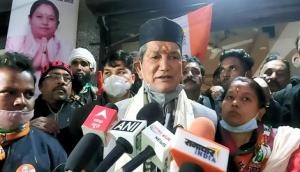
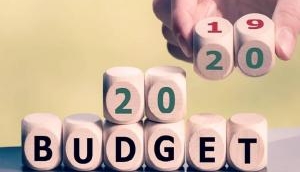
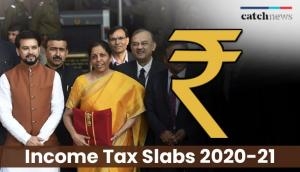
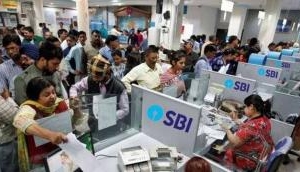
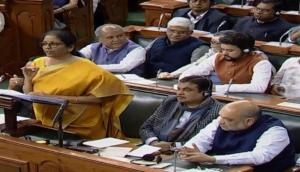
![BJP's Kapil Mishra recreates Shankar Mahadevan’s ‘Breathless’ song to highlight Delhi pollution [WATCH] BJP's Kapil Mishra recreates Shankar Mahadevan’s ‘Breathless’ song to highlight Delhi pollution [WATCH]](http://images.catchnews.com/upload/2022/11/03/kapil-mishra_240884_300x172.png)

![Anupam Kher shares pictures of his toned body on 67th birthday [MUST SEE] Anupam Kher shares pictures of his toned body on 67th birthday [MUST SEE]](http://images.catchnews.com/upload/2022/03/07/Anupam_kher_231145_300x172.jpg)






